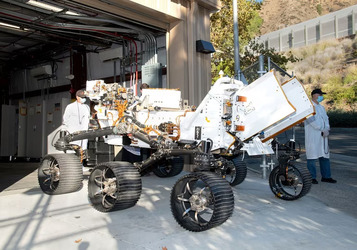The week's pick
Random Articles
Reseach Article
Two Stage Approaches for the Detection and Suppression of Typed Keystrokes in Speech Signals
| Communications on Applied Electronics |
| Foundation of Computer Science (FCS), NY, USA |
| Volume 6 - Number 2 |
| Year of Publication: 2016 |
| Authors: Rizwan Ullah, Renjie Tong, Yawar Ali Sheikh, Zhongfu Ye |
 10.5120/cae2016652428
10.5120/cae2016652428
|
Rizwan Ullah, Renjie Tong, Yawar Ali Sheikh, Zhongfu Ye . Two Stage Approaches for the Detection and Suppression of Typed Keystrokes in Speech Signals. Communications on Applied Electronics. 6, 2 ( Nov 2016), 11-15. DOI=10.5120/cae2016652428
Abstract
In recent decades, keystroke suppression has got a particular attention due to the increasing use of laptops and computers to capture audio in various communication scenarios such as meetings, audio/video instant messaging etc. In many of these situations, a unique problem of additive keystroke transient noise is faced. Because of the non-stationary, short time and abrupt nature of the keystroke transient, it has been a challenging task for many years. In this paper, two new two-stage approaches for the suppression of keystrokes are proposed. In the first stage the speech is estimated using supervised sparse non-negative factorization, which is common in both of the methods. Then, in the second stage, keystrokes are detected and are suppressed by replacing the corrupted speech frames with the corresponding estimated speech frames obtained in the first stage using two new techniques, which is the core contribution of this work. Experimental results show that the proposed approaches exhibit good performance without significantly degrading the quality of speech.
References
- Tong, R. Zhou, Y. Zhang, L. Bao, G. and Ye, Z. A Robust Time-frequency Decomposition Model for Suppression of Mixed Gaussian-impulse Noise in Audio Signals. IEEE Transactions on Audio, Speech and Language Processing, Vol.23, No.1, Pages.69-79, Jan. 2015.
- Sigg, C.D. Dikk, T. Buhmann, J. M. Speech enhancement using generative dictionary learning. Audio, Speech, and Language Processing, IEEE Transactions on (Volume: 20, Issue: 6).
- Benesty, J. Chen, J. Huang, Y. Cohen, I. Noise Reduction in Speech Processing. Series: Springer Topics in Signal Processing, Vol. 2, 2009.
- Subramanya, A. Seltzer, M. L. and Acero, A. Automatic Removal of Typed Keystrokes from Speech Signals. IEEE signal processing letters, vol. 14, no. 5, may 2007.
- Mavaddaty, S. Ahadi, S. M. Seyedin, S. A novel speech enhancement method by learnable sparse and low-rank decomposition and domain adaptation. Speech Communication 76 (2016) 42–60.
- Talmon, R. Cohen, I. and Gannot, S. Transient noise reduction using nonlocal diffusion filters, IEEE Trans. Audio, Speech and Lang. Process., vol. 19, Issue 6, pp. 1584–1599, Aug. 2011.
- Talmon, R. Cohen, I. and Gannot, S. Clustering and suppression of transient noise in speech signals using diffusion maps, Proc. 36th IEEE Int. Conf. on Acoustics, Speech and Signal Processing (ICASSP11), Prague, Czech Republic, May 22-28, 2011.
- Talmon, R. Cohen, I. and Gannot, S. Single-channel transient interference suppression with diffusion maps. IEEE trans. on audio, speech, and lang. Process., vol. 21, no. 1, January 2013.
- Hirszhorn, A. Dov, D. Talmon, R. and Cohen, I. Transient interference suppression in speech signals based on the OM-LSA algorithm. Int. Workshop on Acoustic Signal Enhancement 2012, 4-6 September 2012, Aachen.
- (Arden) Huang, Y. Benesty, J. Audio Signal Processing for Next-Generation Multimedia Communication Systems. Bell Laboratories, Lucent Technologies, kluwer academic publishers, 2004
- Wilson, K. W. Raj, B. Smaragdis, P. Divakaran, A. Speech denoising using nonnegative matrix factorization with priors. 2008 IEEE Int. Conf. on Acoustics, Speech and Signal Processing.
- Sohrab, F. Erdogan, H. Recognize and separate approach for speech denoising using nonnegative matrix factorization. 23rd European Signal Processing Conf. (EUSIPCO), Aug. 31 2015-Sept. 4 2015.
- Schafer, R. W. Rabiner, L. R. Digital Representations of Speech Signals. Proceedings of the ieee, vol. 63, no. 4, april 1975.
- Boll, S. Suppression of acoustic noise in speech using spectral subtraction. IEEE Trans. Acoust. Speech, and Signal Process., vol. 27, no. 2, pp. 113 – 120, Apr. 1979.
- Smaragdis, P. From learning music to learning to separate. In Forum Acusticum, Mitsubishi Electric Research Laboratories, 201 Broadway, Cambridge MA 02139, USA 2005.
- Nandhini, S. Shenbagavalli, A. Voiced/Unvoiced Detection using Short Term Processing. Int. conf. on Innovations in Information, Embedded and Communication Systems (ICIIECS-2014)
- Mohammadiha, N. Smaragdis, P. and Leijon, A. Supervised and unsupervised speech enhancement using nonnegative matrix factorization. IEEE Trans. Audio, Speech, Lang. Process., vol. 21, no. 10, pp.2140–2151, Oct. 2013.
- Luo, Y. Bao, G. Xu, Y. Ye, Z. Supervised Monaural Speech Enhancement Using Complementary Joint Sparse Representations. IEEE signal processing
Index Terms
Keywords

